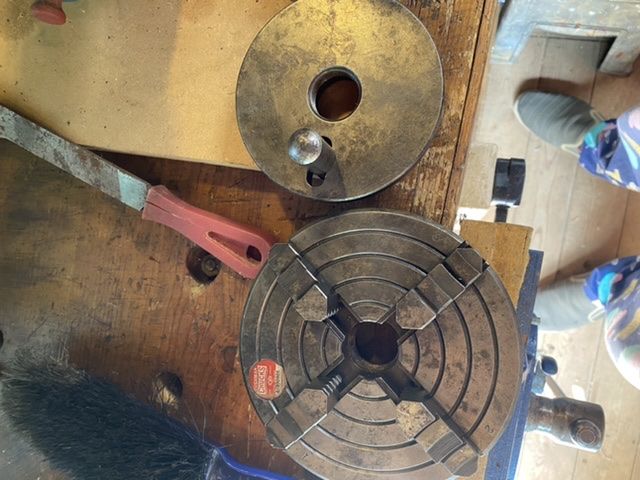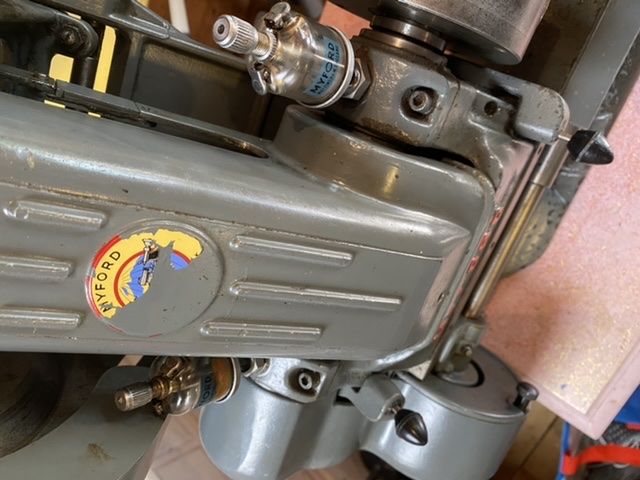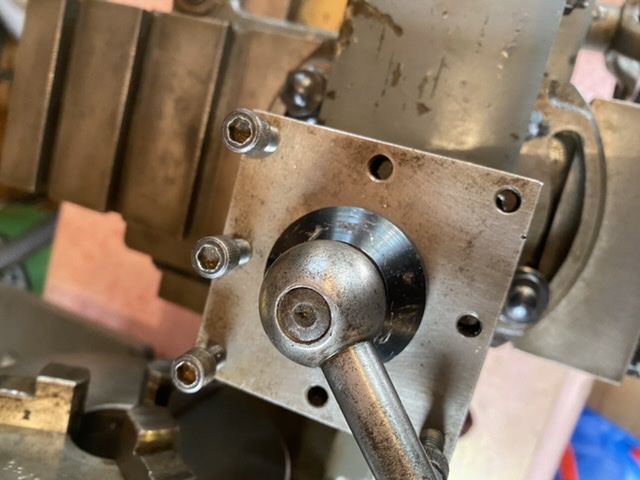Welcome to the Forum.
Whereabouts are you?
If you don't recognise a Catchplate, you probably need help with other things, as well. So person to person will be the quickest way to learn the trade.
Try to find a local Model Engineering Club, and join.
In this way, you can probably get some face to face help in setting up your lathe.
Watching someone more skilled will be a help, with a demonstration being followed by guidance while working hands on.
A good starting point would be to buy and study some books.
A good one for you would be Ian Bradley's "Myford 7 Series Manual".
Another good one, on general workshop practice, would be his "The Amateurs Workshop"
These will give advice on the bench for the lathe and how to set it up to turn accurately.
You will need a set of Zeus Charts. The charts give a LOT of information on threads and the sizes needed to cut them. I still regularly use the ones that I bought in 1958,
For sizes below 1/2", mostly you can use Taps and Dies It is usual to start a drilled hole by using a centre drill to make a starting point for the pilot drill, before using the final size drill..
If you do not have any measuring equipment, you will need to buy some.
A digital calliper will be a good starting point. Since you have a four jaw chuck, you will soon need a Magnetic base and a D T I. Without such equipment, it will be impossible to set work to run truly concentric..
Another help with such work will be second centre. Once you have mastered centering work in the 4 jaw, you can make one, It would be a good training exercise for you.
And remember that a 3 jaw chuck, whilst it may be self centering, will not hold work absolutely central. A good one will hold work so that it is only 0.003" eccentric. And the concentricity may well vary, depending on the diameter being held..
The hardware on the ML7 will be Imperial threads and sizes, not Metric
You can become familiar with the lathe and its use by using it to make a few tools. Start with simple ones, and become more adventourous as you gain experience.
Making a Centre Height Gauge will give some experience in simple turning, and in drilling an tapping.holes,
Then you can make a couple of Tap Wrenches,.one for small taps, and one for larger.ones.
You will need to lubricate Taps and Dies, and learn the technique for their muse, so that you do not break them, and ruin the workpiece.
As you gain experience, and confidence, you can move on to make more complicated tools. O K, you could buy some of them, but you won't learn as much from a credit card!
Making tooling can become a hobby in itself.
You will make mistakes, but you will learn from them and your successes.
By making simple small tools, you will learn (Better to scrap a bit of mild steel bar than an expensive casting in a kit! ) The tools will be useable for many years to come.
I still have a Tap Wrench made when I was an Apprentice, a LONG time ago
If you do not have one, you will soon need a Bench Grinder so that you can grind tools for the lathe. Since the ML7 is a design from 1947, you would do well to use High Speed Steel, rather than carbide tips. (These were developed for heavy, rigid, industrial machines to remove a lot of metal FAST. As hobbyists, we are not on piecework so do not really need them. They have their uses, but for a lot of work, you can manage with HSS )
HTH
Howard
Howard Lewis.









